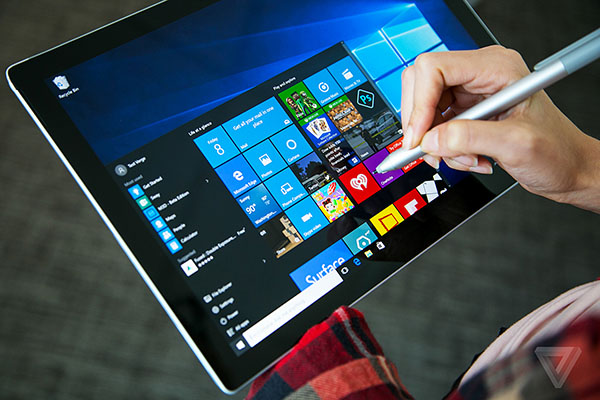Windows
Championing the hardware architecture driving billions of mobile devices across the globe, ARM's high-performance Cortex-A series are found the majority of handsets. And even those that aren't ordinarily associated with the company, such as the silicon inside Apple products, are based on the ARM blueprint.
These devices typically run mobile-optimised operating systems, with Apple's iOS and Google Android accounting for the lion's share of the market. On the flipside, the desktop space, which is considerably smaller and arguably in decline, though still constituting over 200m units per year, is run on a combination of the Intel architecture and Microsoft Windows operating system.
Microsoft has long-realised that it needs a foothold in the mobile space dominated by Apple and Google if it is to fully realise a cross-device operating system spanning from your most intimate piece of technology - the mobile phone - to high-performance gaming PCs.

The ARM and Microsoft partnership, whereby the latter's operating system is specifically tuned for touch-enabled mobile devices powered by the omnipresent ARM hardware architecture, was born almost five years ago and called Windows RT. However, the explicit need to run applications on different architectures meant that Windows RT couldn't run standard Windows applications, with the only ones available through a dedicated Windows Store. The premise was sound but, as dwindling sales showed, the execution, general confusion about full- and quasi-Windows tablets, and lack of familiarity was anything but.
Which leads us on nicely to a welcome announcement in December 2016. Microsoft understands that it really does need fully fledged support across the ARM-architecture world if Windows 10, and subsequent releases, are not to be hamstrung by diminishing PC sales. Having the full gamut of Windows applications available in an ARM-dominated world also paves the way for a genuine successor to the ill-fated Windows Phones.
Microsoft is therefore taking another crack at the ARM ecosystem by ensuring that the full Windows 10 operating system will emulate and run apps that currently operate with the incumbent x86 32-bit instruction set. This means that 64-bit apps won't be supported, but that shouldn't pose a large problem as most have 32-bit variants, too.
The implications are possibly profound. Unlike Windows RT, Windows 10 on ARM-based hardware will run the same applications as an Intel-based machine does, with the emulation between instruction sets, oblivious to the user, handled in the background. It makes great sense for Microsoft to run its latest operating system on the dominant mobile platform - encompassing the ARM-architecture world - that already offers exceptional battery life and has an unmatched ecosystem heritage, and by doing so, Microsoft extends its potential footprint into billions more devices.
It's a win-win situation for the consumer, too, as ARM-based devices tend to be cheaper than their Intel equivalents. Want a tablet or, potentially, a smartphone that runs Windows 10 in its full form? On the back of this announcement, in concert with Qualcomm and its newest Snapdragon 835 chip based on the ARM architecture, you will likely see devices crop up in the next few months. Exciting times ahead.







